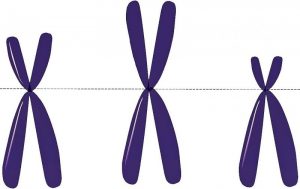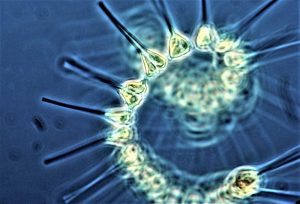Allele
An allele is an alternative form of a gene that is in a specific position within a specific chromosome. These DNA encodings determine the different characteristics that can be passed from parent to child through sexual reproduction. The process by which alleles are transmitted was discovered by Gregor Mendel and formulated into what is known as Mendel's segregation law. In people, traits such as eye color can be caused by the interaction of a single pair of alleles. But in more complex traits, such as height, they are usually caused by interactions of a series of alleles. Some alleles are dominant over other alleles, as in the case of heterozygous pairs.
What are alleles?
Alleles are pairs of genes that occupy a specific place on a chromosome. The word is derived from the allelomorph, meaning that it can arise in different forms.
Allele, homozygote and heterozygote genes
The word allele is derived from the word allelomorph, which means that it can be shown in different ways. In the field of biology itself, the word allele is used to name each gene that is located in the same place where the homologous chromosomes are found. In other words, alleles are the different forms that a gene can take, each with its own sequences. When these genes manage to manifest, they determine some of the characteristics of the individual depending on their properties.
For example, skin color, eye color, blood type, etc. are manifested. When cell meiosis occurs, the chromosomes fight the field and during the confrontation, the allele will be the value that is given to the gene and it will depend on it if it manages to dominate or not the transmission of information. When we speak of the homozygous allele genes, we refer to the genetic composition of a specific characteristic of a diploid organism. Each of the homozygous alleles is inherited in a particular way from its progenitor, so that, when the alleles of that gene are equal, it will be homozygous. The heterozygous allele speaks to us of two different forms that have a particular gene, they are individuals that have pairs of different alleles that determine a characteristic.
Types
- Dominant alleles: the dominant word is used to describe what is mastered or imposed. It is also important to know that the dominant allele does not always play this (dominant) role, just as the recessive may become a dominant gene in certain cases. In this way, if the same gene has more than two alleles, one can be dominant with respect to the second and recessive with respect to the third. The dominant alleles are in charge of determining the characteristics that can be observed in the offspring, that is, those that determine the phenotype. In addition, they are in charge of determining the characteristics that are manifested at a genetic level and that are inherited from one of the parents.
- Recessive alleles: are those that have less possibilities of expressing or determining physical or genetic characteristics in the individual. They manifest only in the presence of another recessive allele. Despite this situation, even if a recessive allele does not manifest in the phenotype or genotype of the offspring it may be present. When both parents have recessive alleles, their descendants show the characteristic of that gene. The recessive alleles are represented by the lowercase letter r and when both are recessive they are represented by the symbol rr.
- Multiple alleles: Multiple alleles are the differences that a certain gene can have, they are capable of having more than two options to characterize a gene. They are responsible for the different characteristics that we can observe in living beings. For example, the type of blood, the color of hair and skin, or the color of flower petals.
- Codominant alleles: arise when there are two different alleles that are in the genotype and the two are expressed. This expression derives in a phenotype, which means the characteristics of both alleles. The expression of a gene in an organism that is heterozygous is then equivalent to that of its pair and will be related to some character.
Where the allele genes are located
The alleles are located in the same position as the homologous chromosomes.
Examples
In Chaetodipus intermedius mice, skin color is controlled mainly by a single gene. The gene encodes the protein that makes the pigment dark. Some of these mice have dark coat, and some have light coat. The allele of the dark coat is dominant and that of the light coat is recessive.
For example, in the mouth of a dragon flower, Antirrhinum majus, a cross between a white flowering plant homozygote C and a red flowering plant homozygote C, will produce descendants with pink flowers. This type of relationship between alleles, with a heterozygous phenotype intermediate between two homozygous phenotypes is called incomplete dominance.
How to cite this article?
Briceño V., Gabriela. (2019). Allele. Recovered on 3 May, 2025, de Euston96: https://www.euston96.com/en/allele/










